Nick Bosa: Domination from Day One

A version of story appears in the April 22-29, 2019, issue of Sports Illustrated. For more great storytelling and in-depth analysis, subscribe to the magazine—and get up to 94% off the cover price. Click here for more.
John Bosa, still imposing at 6' 4" and 230 pounds, is squeezed on a leather couch in a quiet corner of a Columbus, Ohio, Italian spot, next to his son Nick, now some 40 pounds heavier than his dad. John is nursing a Dewar’s on the rocks. After talking for an hour about the future first-round pick by his side, the first-round pick of 32 years ago breaks down. He’s crying.
As well as any family this side of the Mannings, the Bosas—a kind of NFL pass-rushing monarchy—know this: Every kid in every draft has overcome obstacles. The hurdles aren’t making John Bosa emotional; it’s how Nick has dealt with them. “Every part of it, every bump in the road,” he says, patting his kid on the thigh, “whether it’s super highs or really dark moments, he’s just handled it. He’s just been amazing.”
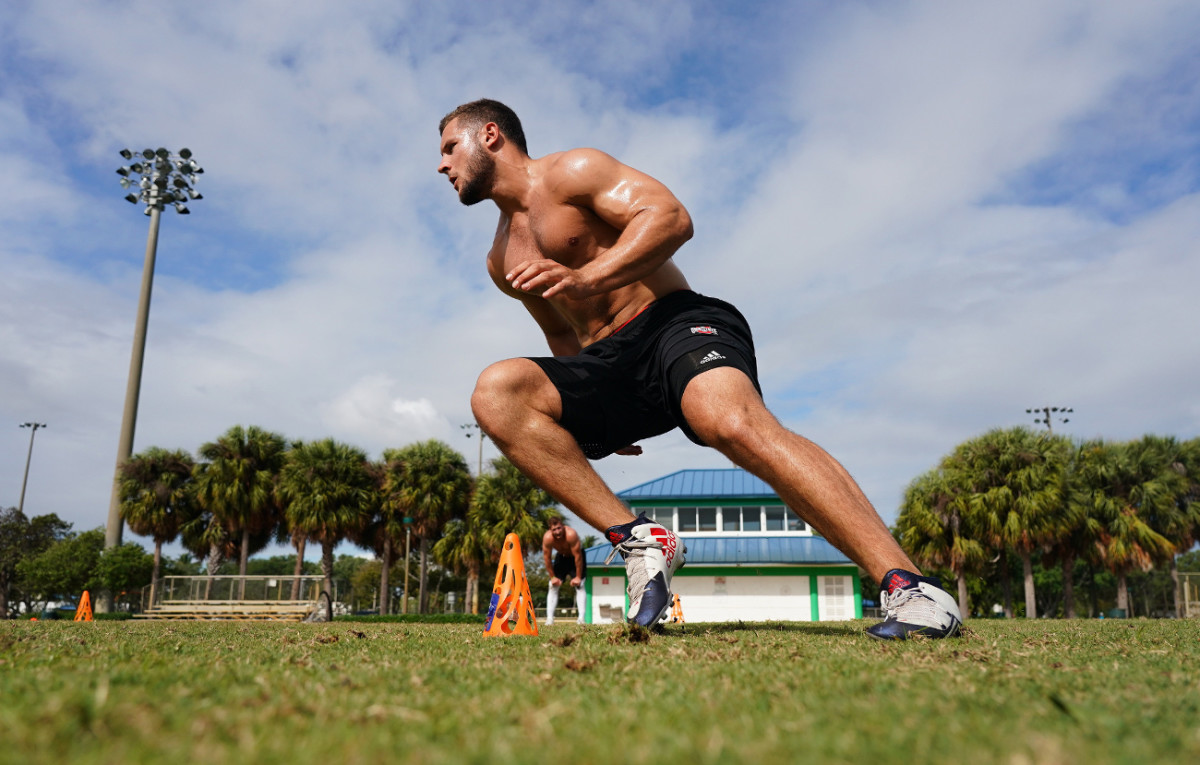
John Bosa was the Dolphins’ first-round pick, 16th overall, in 1987. His brother-in-law, Eric Kumerow, was Miami’s first-round pick, 16th overall, in 1988. John’s older son, Joey, was drafted third overall in 2016 by the Chargers.
That Nick’s a good bet to go higher than any of them—he’s seen as the likely second pick this year, to San Francisco—is crazy on its own. And yet Nick’s story is about more than the dominance that came natural to him, that made him feel from age seven that he was just better than the guy across from him. It’s about the obstacles thrown in his way, the final one just as a run at the national championship, maybe even the Heisman Trophy, kicked into gear, and the passion and focus with which he met them.
Some of the darkest moments of Nick Bosa’s young life stemmed from the night of Sept. 15, 2018. But where others might have sought sympathy, Bosa took responsibility.
“Everything happens for a reason,” he says. “Your body doesn’t just do something for no reason. There are obviously some things I was doing that put my groin in danger.”
With 14:05 left in the third quarter of Ohio State’s third game of the season, against TCU, Bosa came screaming off the edge on a third-and-six. He was ridden wide and out of the play by left tackle Austin Myers, and as he tried to bend the corner, Nick explains, “it just popped.”
John, coming back down the AT&T Stadium stairs from the bathroom, caught sight of his son as trainers helped him off the turf.
Holy s---, that’s 97.
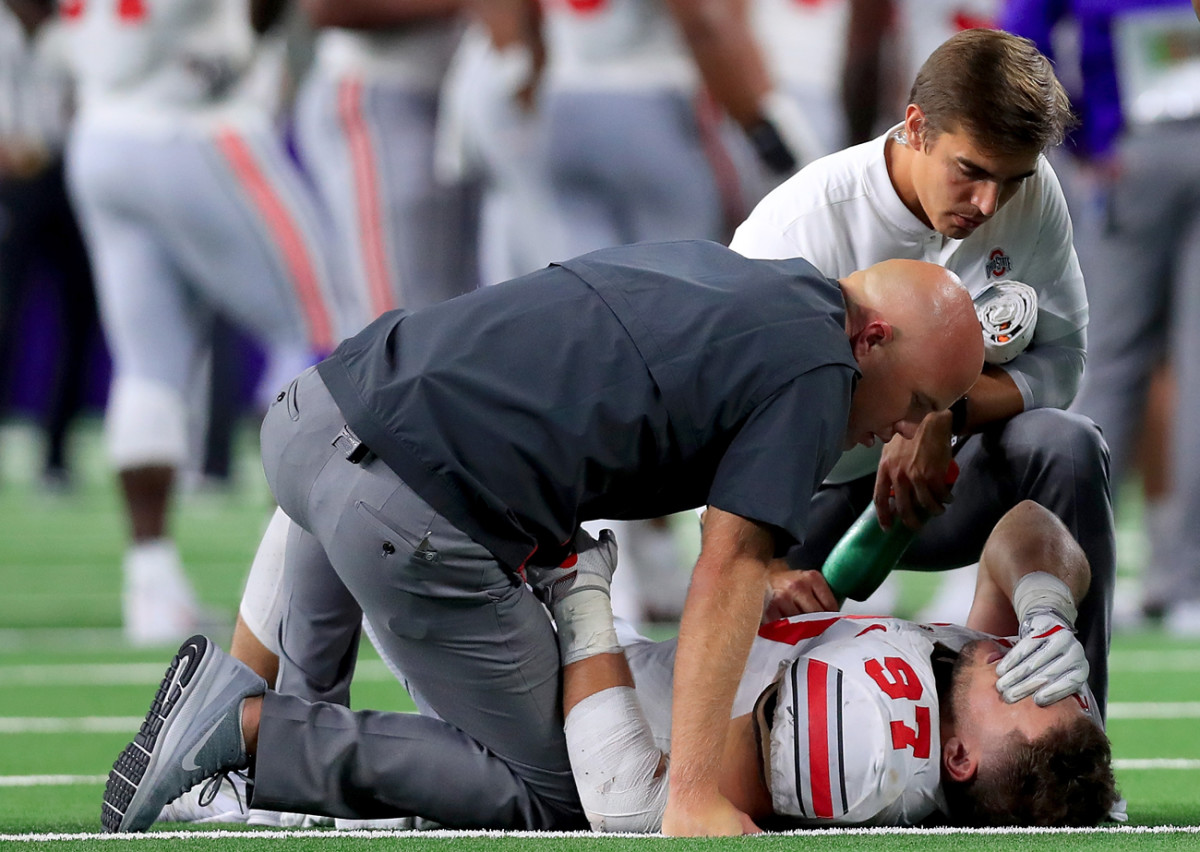
Nick’s first response was a wave to his parents in the stands as if to say, I’m O.K. His second was a realization that he wasn’t O.K. His groin had felt strained in the opener. The next week the pain subsided. It returned before TCU. “I was pushing through it, for sure,” Nick says. “I was just rushing with no regard for my body. I didn’t think my body would just give out on me like that.”
The same desire to surround his kids with the best—agents at CAA and financial advisors at UBS for Joey—led John Bosa to Dr. William Meyers, a renowned core-muscle specialist in Philadelphia. Meyers performed Nick’s surgery the following week, and Nick was told he’d be out for 10 to 12 weeks. Shouldering that news, he holed up in his off-campus apartment in Columbus, emerging only for rehab sessions at the team facility. Coach Urban Meyer says he never had to have a single conversation over academics with Nick. Now he was missing class. Assignments piled up. Everything Nick had built was coming undone.
He thought about his path. The self-doubt that had festered in his freshman year over living up to the legacy of his brother, a two-time All-American. The dissipation of that doubt during a spring spent working with line coach Larry Johnson, who turned him into the Big Ten’s Defensive Lineman of the Year as a sophomore. And what 2018 was shaping up to be—a throwback to his childhood, when dominating a football game came to him like passing a math test would to another kid.
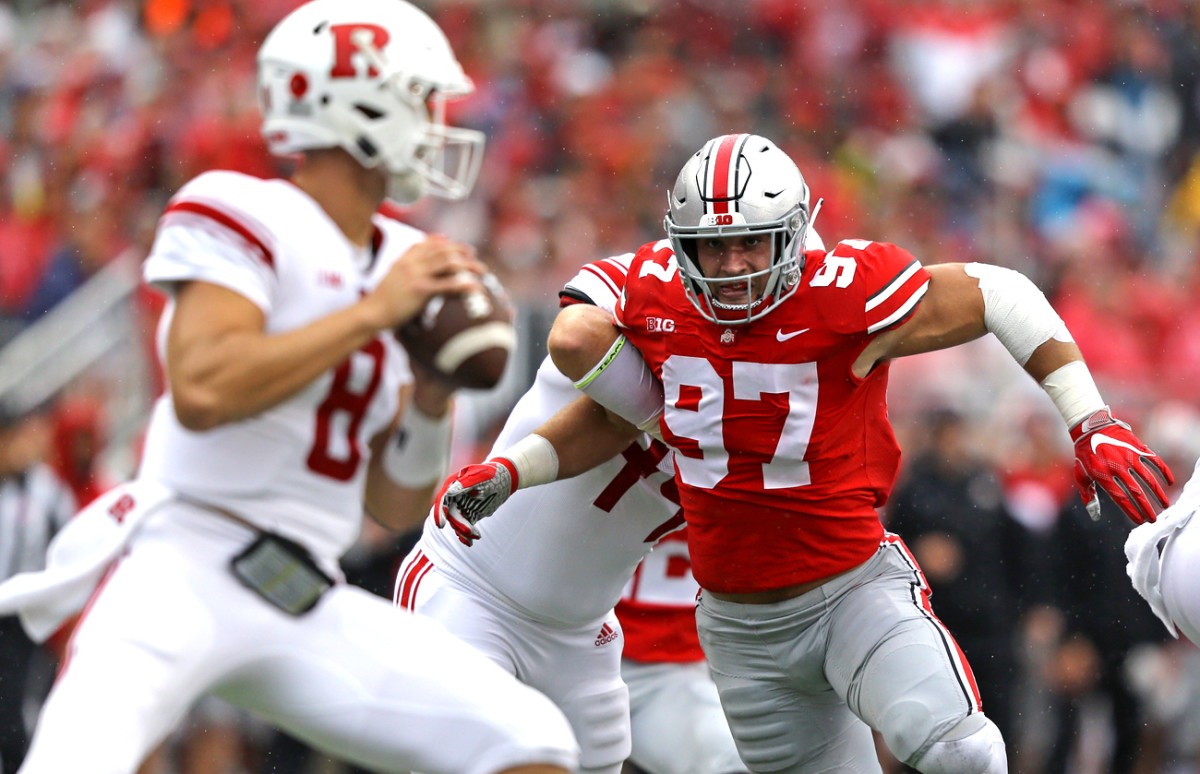
“Lights out,” Johnson says, laughing. “I said then, I don’t know who’s gonna block him—I don’t know if there’s a tackle in the Big Ten who has a chance without someone chipping him, double-teaming him.”
Then just like that, after tearing apart Oregon State and Rutgers (three sacks, five tackles for losses), and setting up Ohio State’s first touchdown against TCU with a strip-sack in the end zone, he was alone in his apartment, with all he’d lost.
“I think we would’ve been playing for a national championship,” he says.
Every step of Bosa’s recovery was covered closely in Columbus. As his teammates fought through the season without him, Nick chafed at being a focal point, on the slim possibility that he might return for the Buckeyes’ bowl game. Watching the defense struggle only made it worse—“just looking at the offensive lines we were playing,” he says, “and thinking how much it’d be fun to just go out there and destroy them.”
Meanwhile John and Dr. Meyers shuffled through options for Nick’s rehab. Meyers mentioned a facility in Orange County, Calif. John Bosa punched it in his phone—five minutes from Joey’s house in Tustin. Going there would require Nick to withdraw from school. On the flip side, it would allow his teammates to move on with their season and give Nick access to Todd Rice, a former Chargers trainer whom Joey had hired when the team moved to L.A. in 2017.
Nick had trained with Rice during breaks in his school calendar—Bosa became known at Ohio State for the stretching routine Rice taught him. Now, after post-op rehab allowed it, he’d be able to immerse himself.
“Honestly, football is so behind in training,” Nick says. “[Rice] teaches us how to train correctly. There’s a mentality of toughness that leaks into [traditional] training. You shouldn’t be getting hurt training. These things that have evolved into football-specific workouts, it’s just not correct.”
Rice’s approach isn’t exactly what Tom Brady evangelizes, but it isn’t far off—emphasizing pliability and flexibility. Joey Bosa says Rice’s methods have made him faster and more explosive and eliminated chronic pain. He believes in them enough to have bypassed voluntary team strength-and-conditioning work to go with Rice.
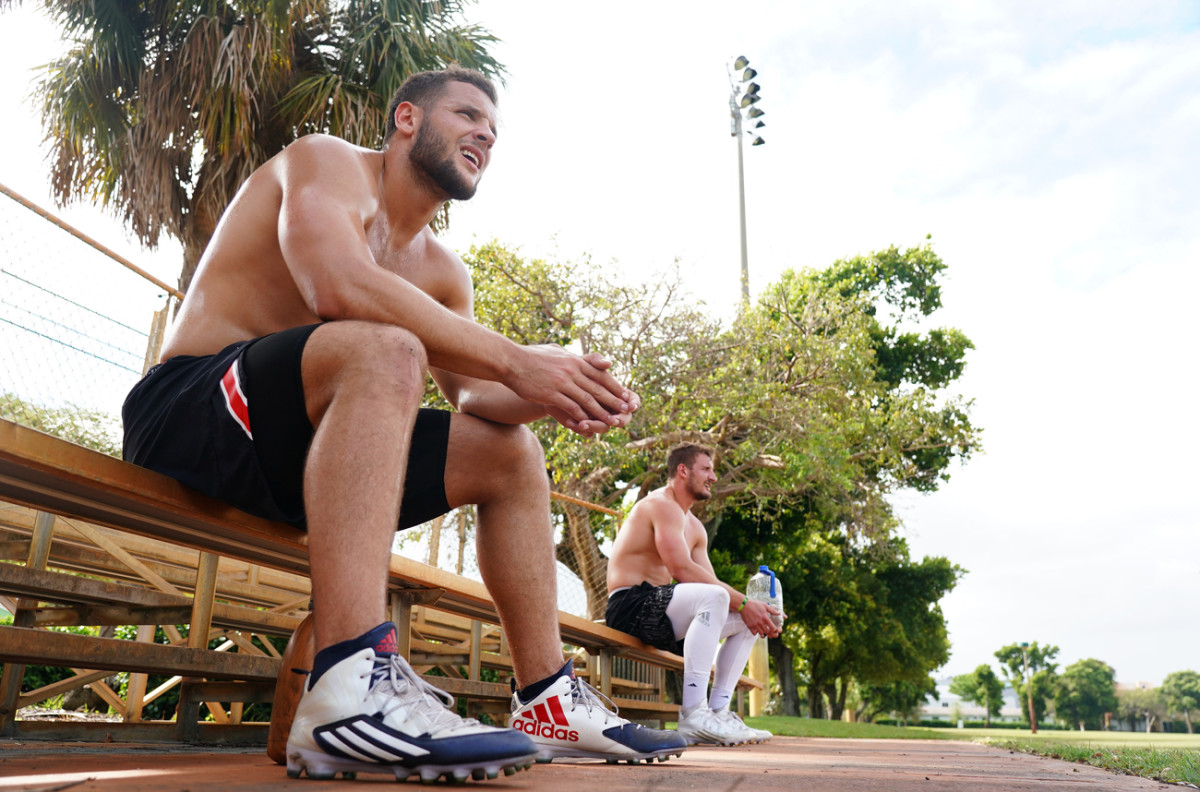
“Everything has evolved since I played,” John Bosa says. “But this is even more evolved. Guys like my sons are playing defensive end and training more like sprinters. It’s not powerlifting. It’s not putting 700 pounds on your back and squatting. It’s a very different philosophy. It’s based on performance and flexibility and trying to avoid injuries.”
Rice doesn’t have all the answers, but his work has made the Bosas think—maybe it’s not a coincidence when a guy who pushes a tire up a hill messes up his back, or a guy driving a weighted sled pops his Achilles. And beyond shedding light on his own injury, it showed Nick that he might have even more room to grow than he’d thought, opening up the scary idea that he’s only been operating at 80% or 85% capacity so far.
Maybe that will prove itself out, maybe not. For now, Nick says he already feels the difference that a couple months working with Rice has made. At Ohio State’s March 20 pro day, Nick showed up to support his teammates ahead of a late lunch with 49ers GM John Lynch and VP Adam Peters. Standing on his combine numbers, which bested most of those his brother posted in 2016, he didn’t do much other than socialize with teammates, coaches and scouts. “At last year’s pro day I was pretty stiff, I didn’t feel very good,” Nick says. “Today my body feels better, my back feels better, my knees feel better.”
As a dad, John’s plan was to let his sons find their own way, just as he never coached them or pushed them to play his sport. So it was on his own that Nick showed what can’t be taught—the stuff that leads a seven-year-old to tug on a youth coach’s shirt at his first practice and ask to be switched from offensive line to defensive line. “He was literally playing with leverage at seven, eight years old,” John says. “It was uncanny.”
“I wasn’t very good at baseball,” Nick says. “Basketball, I was pretty good at. Football was just domination from Day One. I loved the aggression, being able to hit people and grab people and throw people. It was just like, O.K., I’m better than these kids. Go to the next level, I’m better than these kids.”
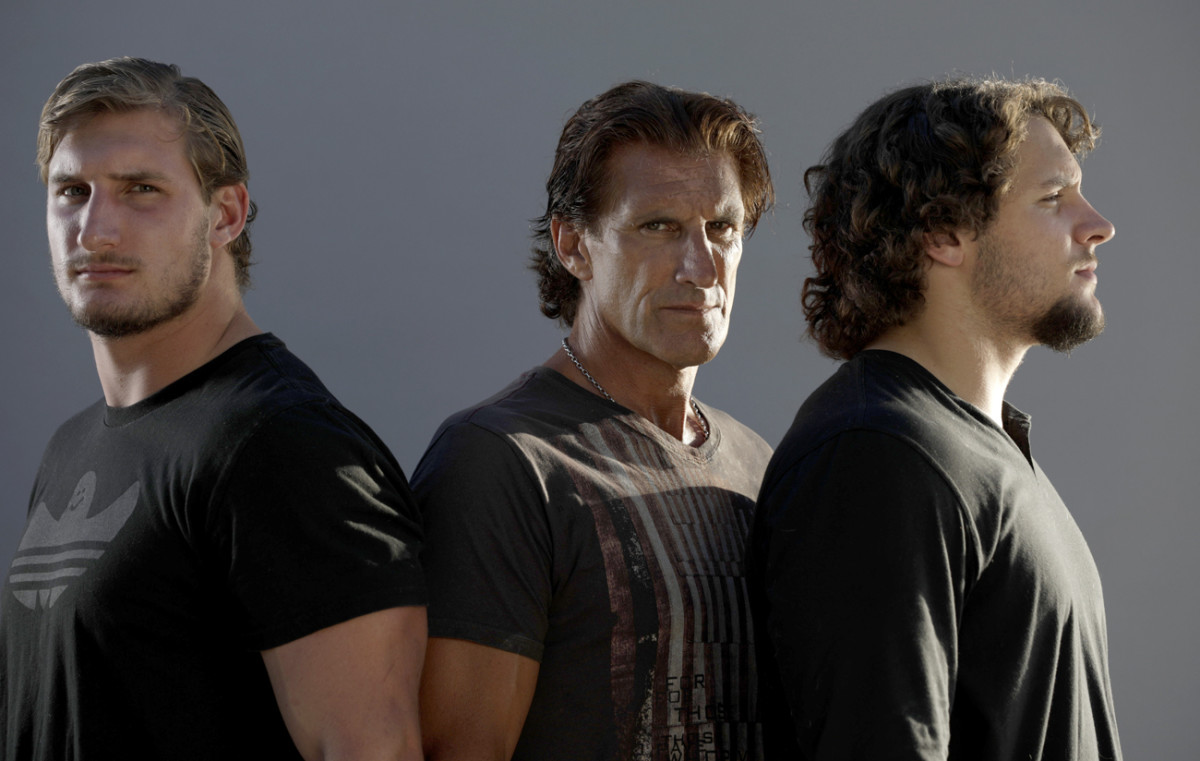
“The boys would get up at 5 a.m. to do winter workouts and never complain,” John says. “It’s just an inner motivation.”
That’s how Nick can be both a finished product and a player still just scratching the surface. Finding an edge with Rice is one example. Another is in how Johnson taught him to see the pass rush almost as a martial art, a form to be honed and improved upon—which is why Nick’s iPad is loaded with cutups of his brother, of Tamba Hali, of Dwight Freeney, DeMarcus Lawrence and Aaron Donald.
And then there’s the engine of ever-present expectations—not those of others because of his name, but the ones he’s set for himself, for what he wants to become.
“The best pass rusher in the NFL,” he says, stridently.
“Nick’s an extremely mature guy,” Urban Meyer says. “From Day One when I met him, he’s made the right decisions. He’s just always been extremely businesslike and focused on what he wanted to do.”
That’s the guy who, when hit by what most would see as plain bad luck, found opportunity. And there’s the other side, too, which was there in the look he gave Johnson after the strip-sack against TCU, the final monster play of a monster college career—“His eyes lit up,” Johnson says, “and I’m like, ‘Man, who is this guy?’ ”—that made him a kid again.
“I think 95% of playing football is preparation. And 5% is me as a seven-year-old,” Nick says. “The preparation is well thought out and not that fun sometimes. But to actually get to go play, to take over, to make a play, that’s when the seven-year-old dominating people, looking across the field thinking, I’m gonna destroy you, comes out.”
How he’s approached the 95% was enough to have his dad in tears. The payoff will come when he can unleash that remaining 5% on the NFL.
Question or comment? Email us at talkback@themmqb.com.
